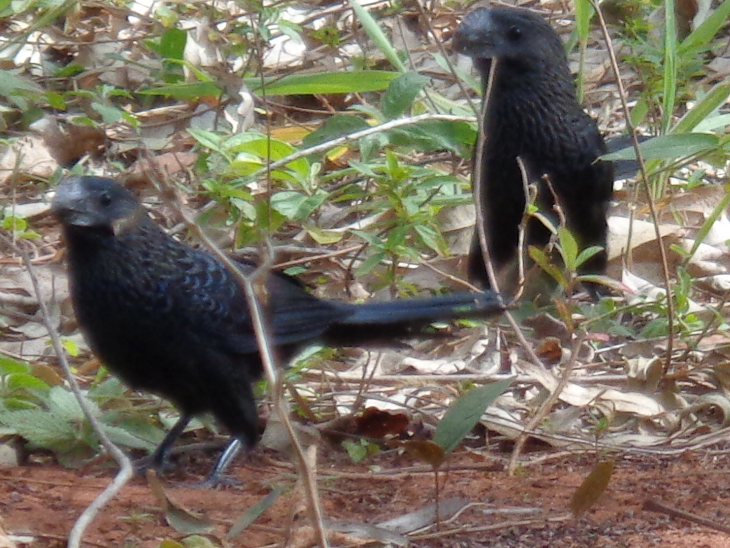The Smooth Billed Ani is a common sight all across Paraguay. They are more of a bird of the countryside but are also to be found in towns.
Not only in Paraguay are they common. They have a large range that extends from Southern USA all the way down to Northern Argentina.
The Smooth Billed Ani (Crotophaga Ani) is a member of the cuckoo family. However unlike other members of the family it is not parasitic. It does not seek out nests of other birds in which to deposit its eggs.
Instead the Anis live in large colonies and the young are cared for communally. These communal nests can be home to asw many as 25 birds. Within them the chicks are often cared for by the youngsters who were themselves chicks the year before.
This allows the adult birds to all leave the nest together as a flock. The flock will stay together as the birds seek out food.
The Ani itself is a fairly large bird of 35 cm in length. Being large and also jet black they are also very conspicuous amongst the green grasses.
The birds have short wings and a long squared off tail. Also a large heavy beak.
They are not graceful fliers. The flight of an Ani tends to be a few sharp wing flaps, a long flat glide and then a crash landing.
Watching these birds for any length of time and all feelings of how sinister they may be. All black and with those large beaks soon vanishes. Instead it is the comedy of their ungainly movements that quickly wins through.
The large tails are in fact more of a hindrance than an aid to flight. They flop lazily behind the birds and in anything more than a gentle breeze can cause the bird to be blown off course.
Unsurprisingly something that travels so poorly by air does much better on the ground.
An Ani is more likely to be seen walking than flying. The flock works its way across the grass looking for any suitable snack to eat.
They are carnivorous so it is animals rather than plants they are seeking. The usual diet for an Ani is insects and termites but they will take small lizards and frogs.
Given their means of hunting it should not be surprising that their preferred habitats are ones in which they can see their prey on the ground. Open or semi open areas suit them best. Grasslands or cultivated fields being ideal.
As humans also flourish in these environments, turning forest to grasslands and fields it is not surprising that in Paraguay where there are people there are also Anis.
They do not come too close to people if that can be avoided and a flock is easily scattered by a passing person. However they will come fairly close and if startled soon regroup and return.
In addition to not being forest birds Anis are also not mountaineers. They keep to the lowlands venturing up only onto low hills and the lower slopes of larger ones.
I often see a flock of them working their way around my garden in search of prey. There will be as many as a dozen or even twenty birds in the flock making them very easy to spot.
The first sign I usually have that there are Anis around is the sound they make. They are very vocal birds that have a distinctive call. Each bird will join in the chorus which can be heard from a good distance.
Then once they have arrived the next sound will be the bangs and crashes as they make flights towards where they intend to browse. Then finally the rustle of the grass as the birds walk though it searching for their prey.
All in all they are an easy and enjoyable bird to watch as they go about their business. Of course though their poor attempts at flight do mean that when ever the flock is startled it makes such a racket taking to the air that any other birds that may be in the vicinity are also scared off.
That though is all part of trying to watch birds in the garden.


Recent Comments